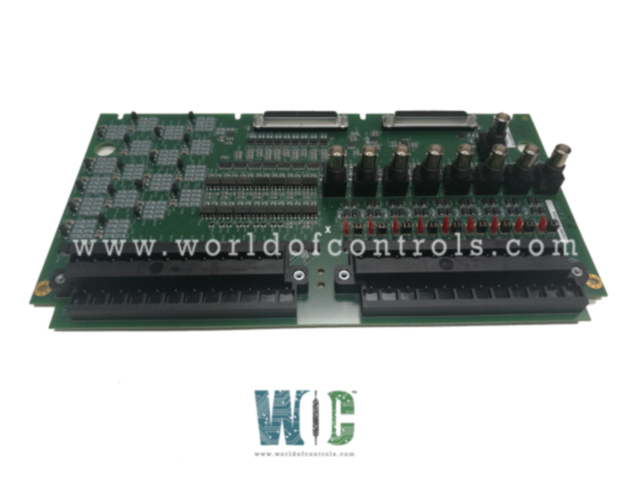
World Of Controls understands the criticality of your requirement and works towards reducing the lead time as much as possible.
IS200TAMBH1ABA - Acoustic Monitoring Terminal Board is available in stock which ships the same day.
IS200TAMBH1ABA - Acoustic Monitoring Terminal Board comes in UNUSED as well as REBUILT condition.
To avail our best deals for IS200TAMBH1ABA - Acoustic Monitoring Terminal Board, contact us and we will get back to you within 24 hours.
Part No.: IS200TAMBH1ABA
Manufacturer: General Electric
Country of Manufacture: United States of America (USA)
Temperature Operating: -30 to 65 o C
Product Type: Acoustic Monitoring Terminal Board
Availability: In Stock
Series: Mark VI
IS200TAMBH1ABA is an Acoustic Monitoring Terminal Board developed by GE. It is a part of Mark VI series. The board works in tandem with the Acoustic Monitoring Input board. Together, they form the acoustic monitoring system, providing 18 channels of signal conditioning through two nine-channel acoustic monitoring terminal boards (TAMB) and one 18-channel I/O acoustic monitoring sub-assembly. The board extends support to third-party vendors such as Bentley-Nevada, Vibro-Meter, GE/Reuter-Stokes, and others, enabling integration and compatibility within the system.
The WOC team is always available to help you with your EX2000 requirements. For more information, please contact WOC.
What is IS200TAMBH1ABA?
It is an Acoustic Monitoring Terminal Board developed by GE under the Mark VI series.
What type of signal does the TAMB receive, and how is the charge amplifier powered?
It receives an mV output either from the CCSA or a third-party charge amplifier. The charge amplifier's power is supplied by the TAMB using a current-limited +24 V or -24 V supply, or from an external power source.
How does the module manage signal input and connectivity?
It incorporates two terminal boards (TB1 and TB2), each equipped with 24 connections and a total of nine channels. These channels, controlled by inputs via DIN connectors and jumpers, allow for efficient management of both current and voltage inputs.
What connectors are available, and what purpose do they serve?
Two D-type connectors positioned on the back edge of the board facilitate interfaces and connectivity, enabling seamless integration within the system architecture.
What is the primary role of the terminal board and its notable features?
The board plays a vital role in signal conditioning, connectivity, and integration with third-party systems within the acoustic monitoring framework. Its capabilities in managing inputs, providing power, and ensuring compatibility contribute significantly to the system's efficient operation and data accuracy.